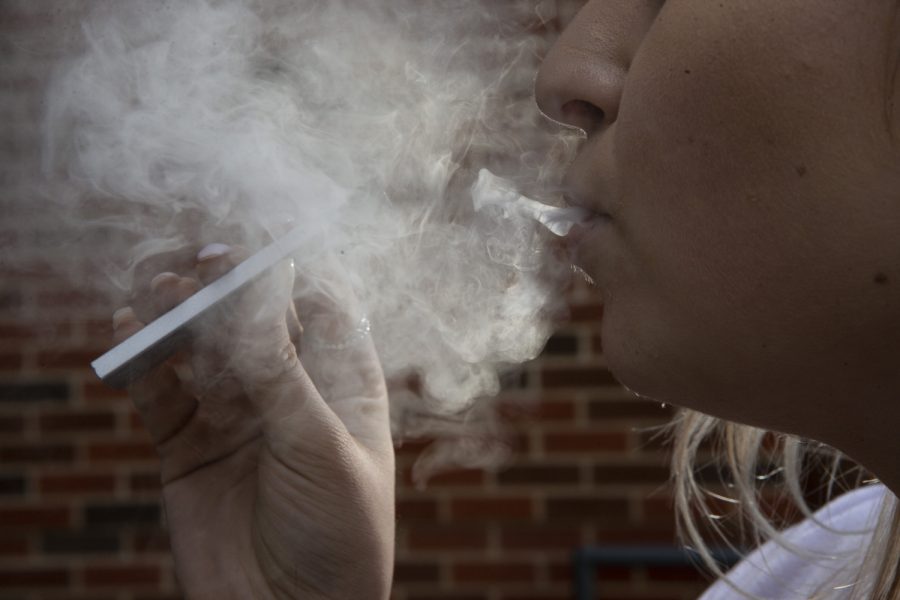Opinion: Vaping epidemic threatens health and safety of college students
With more evidence linking e-cigarette use to serious health risks, more public awareness on the dangers of excessive vaping is necessary.
Photo Illustration by Katie Goodale.
September 4, 2019
Any person who has entered one of the downtown Iowa City bars on a weekend night has surely recognized the hazy stew of artificially flavored vapor billowing from countless e-cigarettes in the crowd.
In recent years, vaping has become a worldwide phenomenon — and one that has seemed harmless to many until recently. Last week, the Oregon Health Authority reported the first death linked to vaping.
In connection to this tragedy, doctors have reported an alarming number of vaping-related illnesses nationwide. According to The New York Times, 193 cases have been reported in 22 states.
Extended use of e-cigarettes has led to “popcorn lung,” a term medical professionals use to describe certain incidents of severe lung damage. With these recent findings shedding light on the danger of e-cigarettes, it would seem logical that people — in particular college-educated adults — would cease their frequent use of these toxins.
However, it seems that despite the risks involved with vaping, nicotine-delivery devices can be found pretty much anywhere. The dismal truth is that young adults tend to follow cultural trends. Some of these fads can be as harmless as wearing mom jeans, while others can have cancerous side effects.
In my circle of friends, I am constantly surrounded by people using an array of e-cigarettes. Although I do not directly know someone who has suffered lung disease from such devices, I have noticed firsthand my peers’ addiction to nicotine.
In fact, some medical professionals believe that the addiction to e-cigarettes is actually worse than the addiction to basic cigarettes. Sharon Levy, director of the Adolescent Substance Use and Addiction program at Boston’s Children’s Hospital, said in an interview with the Washington Post she noticed the detrimental side effects of vaping.
“With the Juuls, kids are able to get a much higher dose of nicotine — and dose matters,” Levy said. “These kids have behaviors that we often see in patients who have opioid or marijuana addiction, but we don’t typically see with kids who developed an addiction to traditional tobacco cigarettes.”
Part of the problem with vaping is that many users seem to believe that what they are doing is innocuous. They are largely unaware of the problems they may face down the road if they continue to inhale this vapor.
In the recent story published by The Daily Iowan on the hazards of vaping, several University of Iowa students interviewed said they were unaware of the chemicals they were consuming by inhaling the vapor from their e-cigarettes.
When all information is not presented, it is difficult to make an informed decision. However, now that new health risks and deaths are being linked to the use of vaping, willful ignorance is no longer a viable excuse.
It would seem logical to take all the necessary precautions to ensure our health and well-being. At the very least, we could have clean air — free of fruity vapor — in Iowa City nightlife.
Columns reflect the opinions of the authors and are not necessarily those of the Editorial Board, The Daily Iowan, or other organizations in which the author may be involved.





